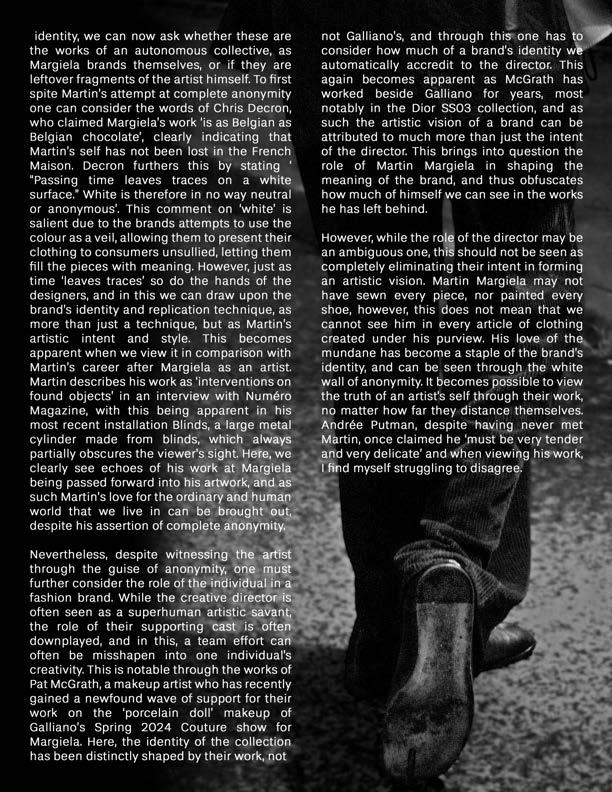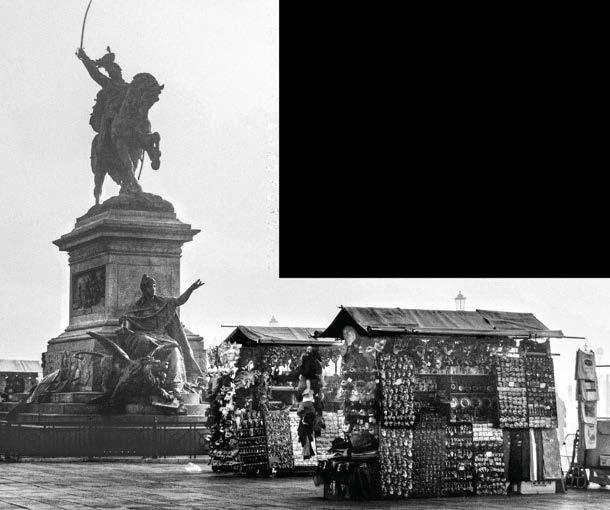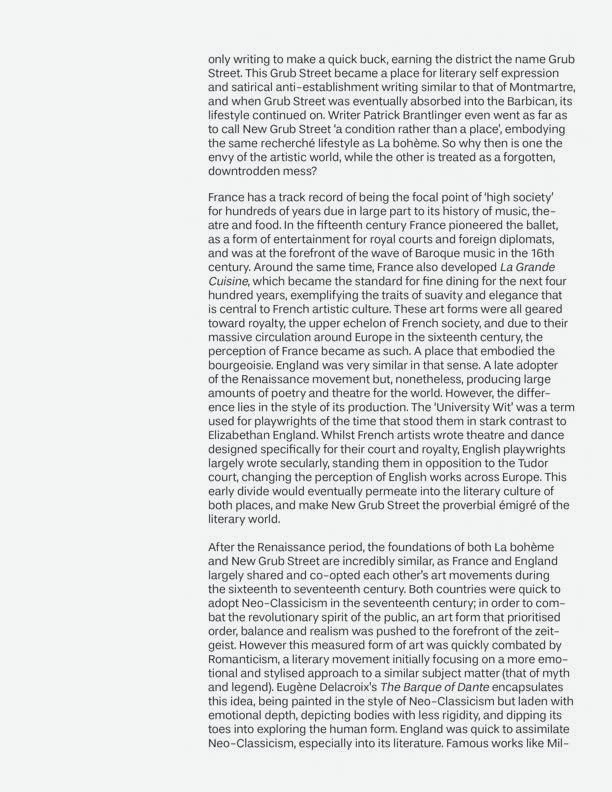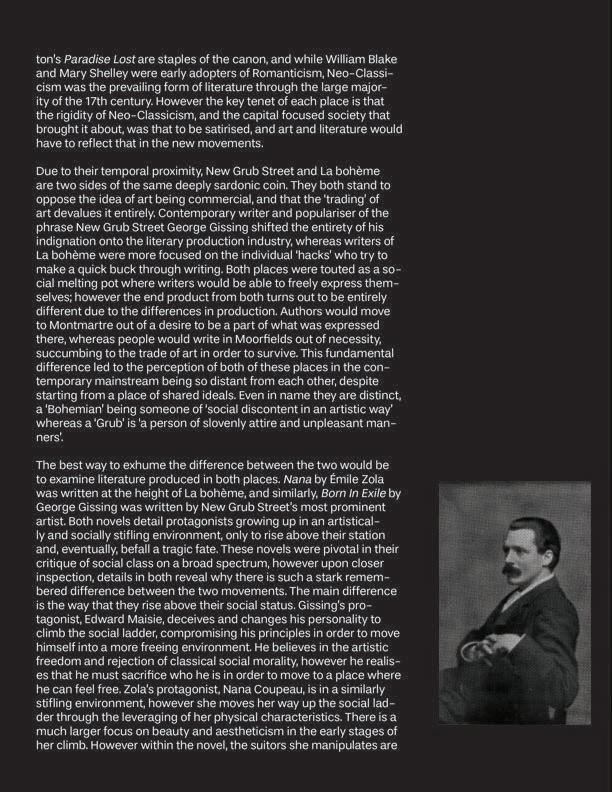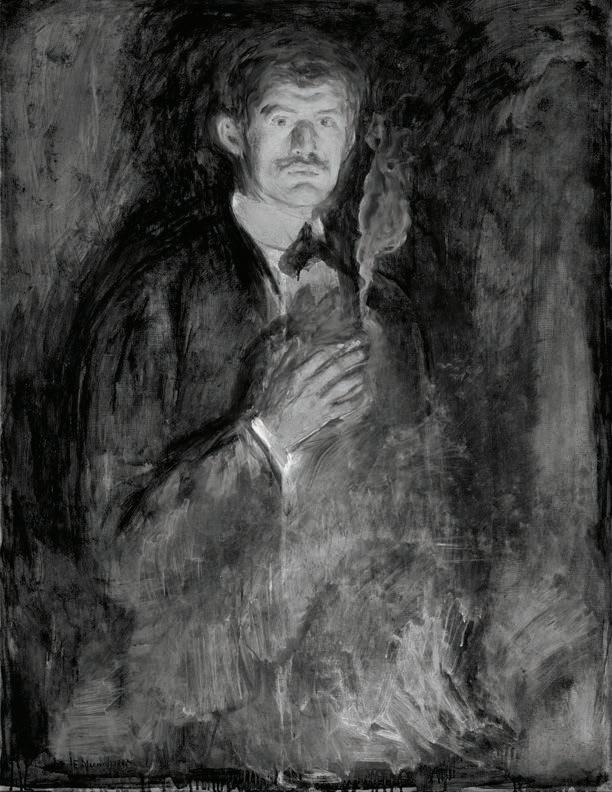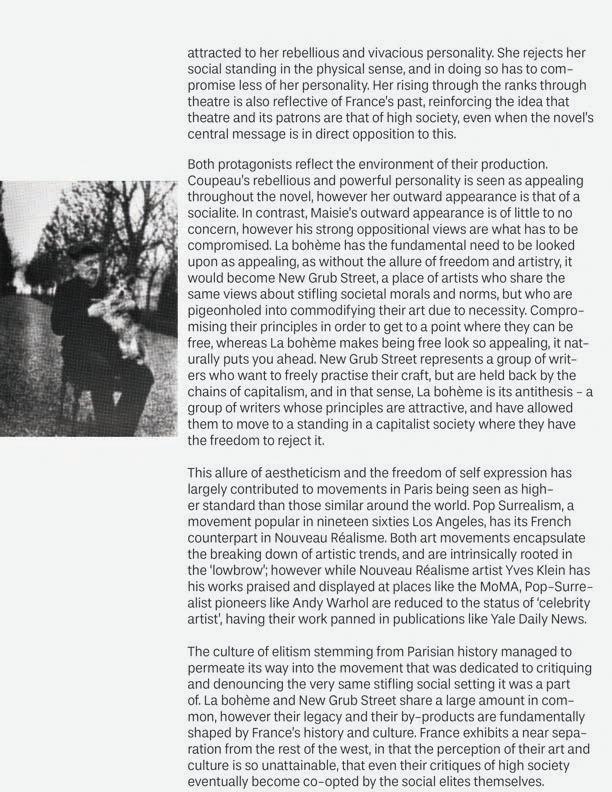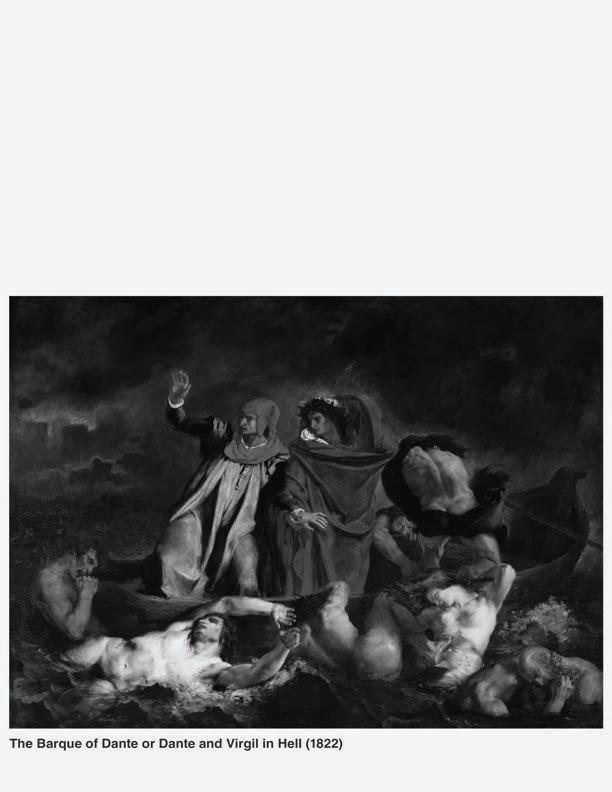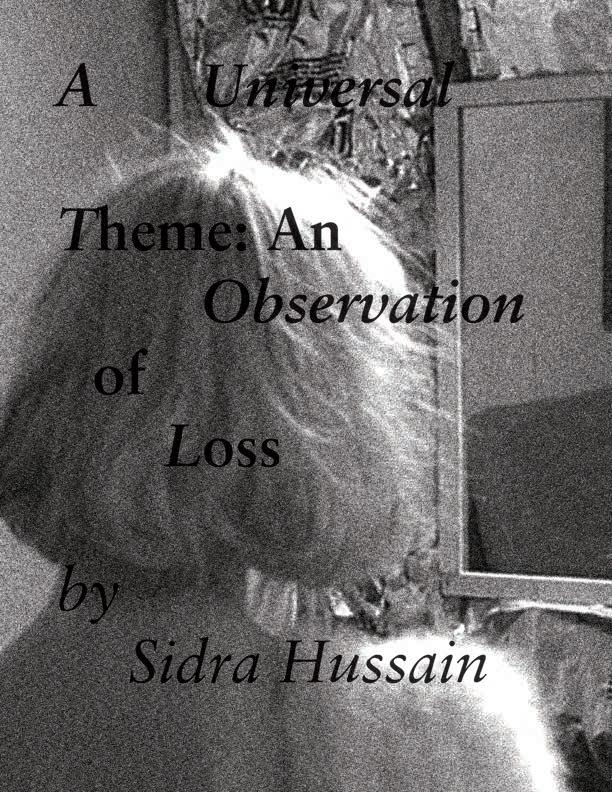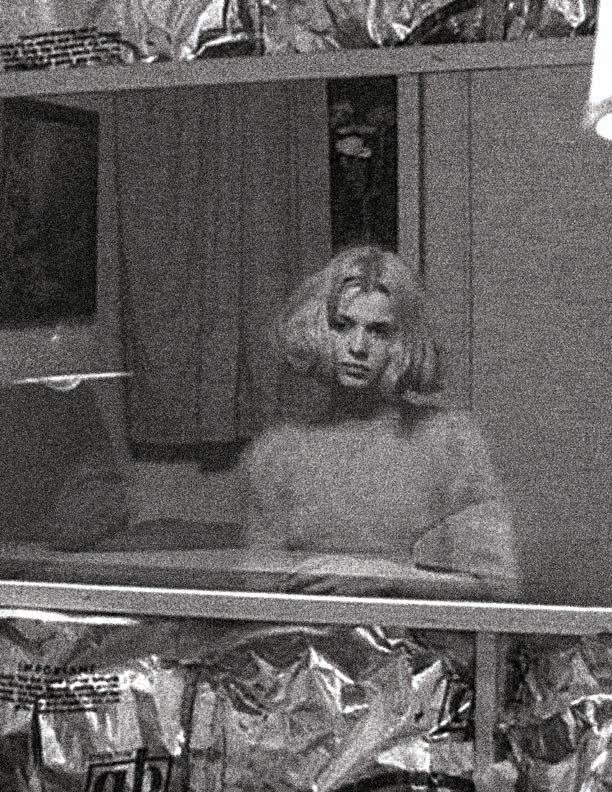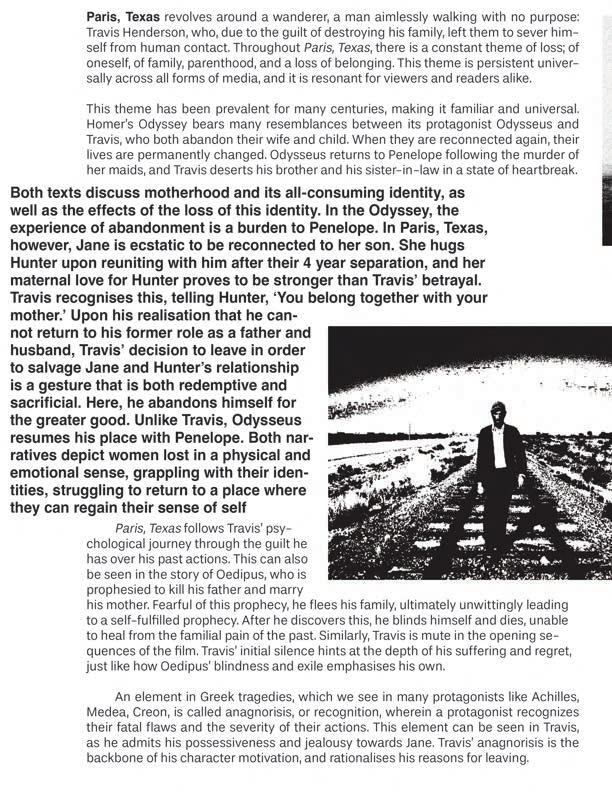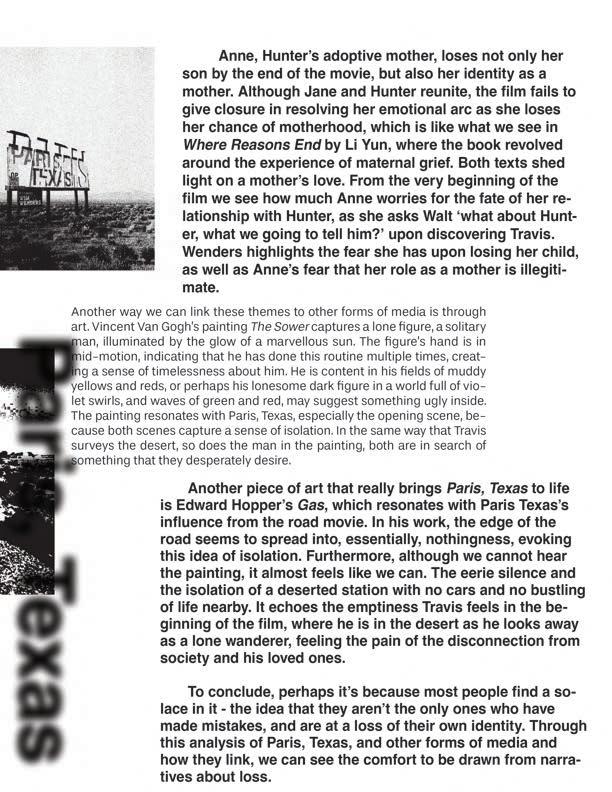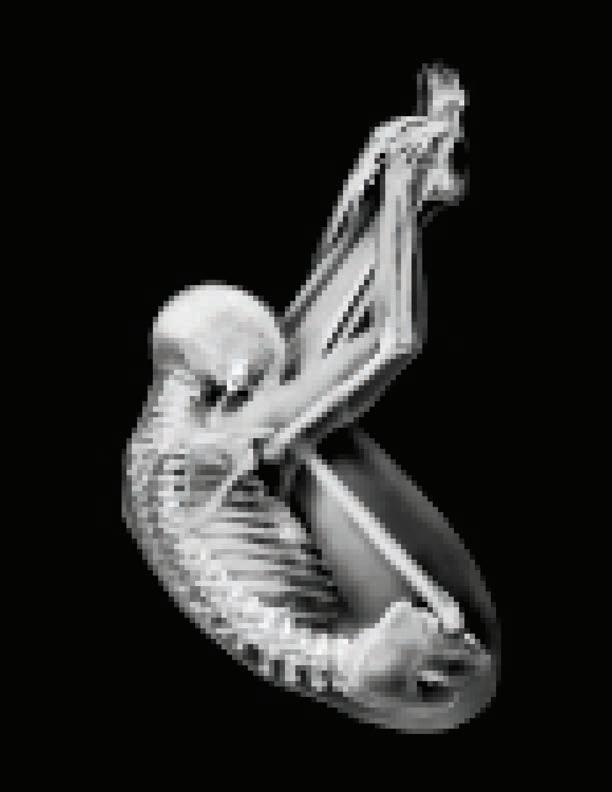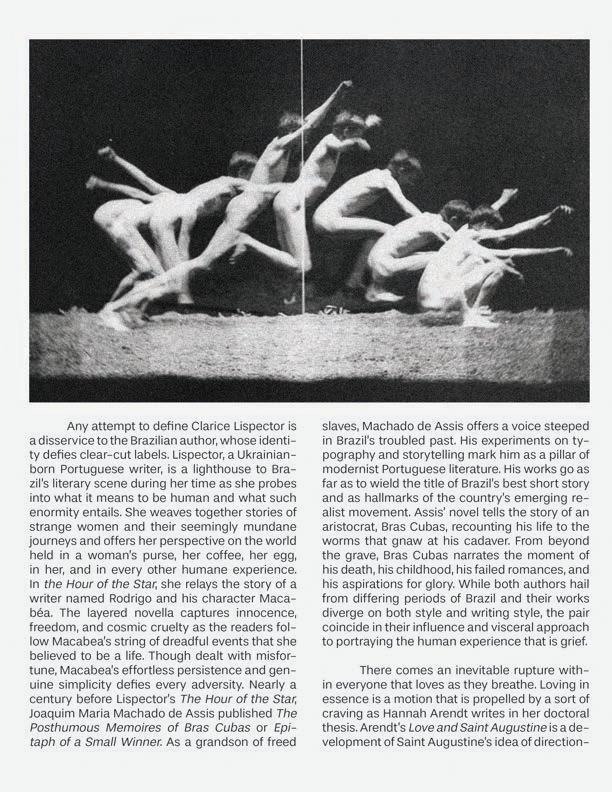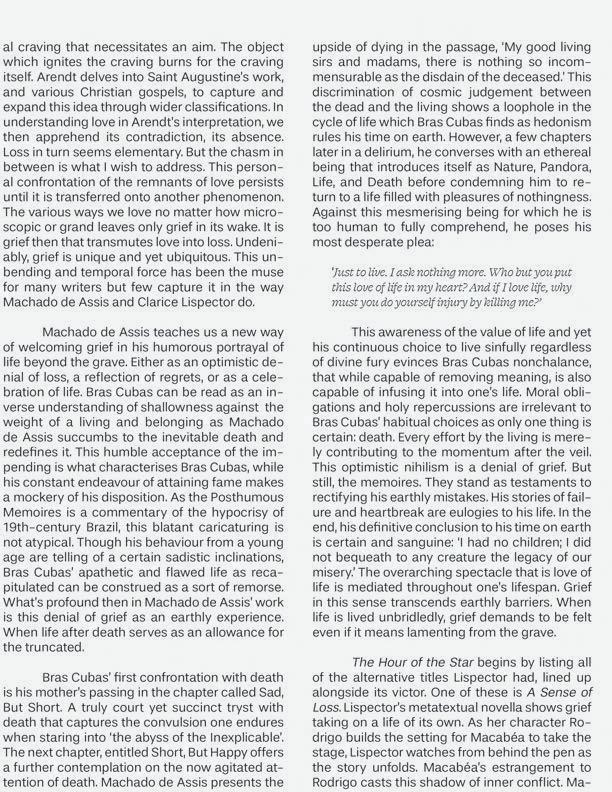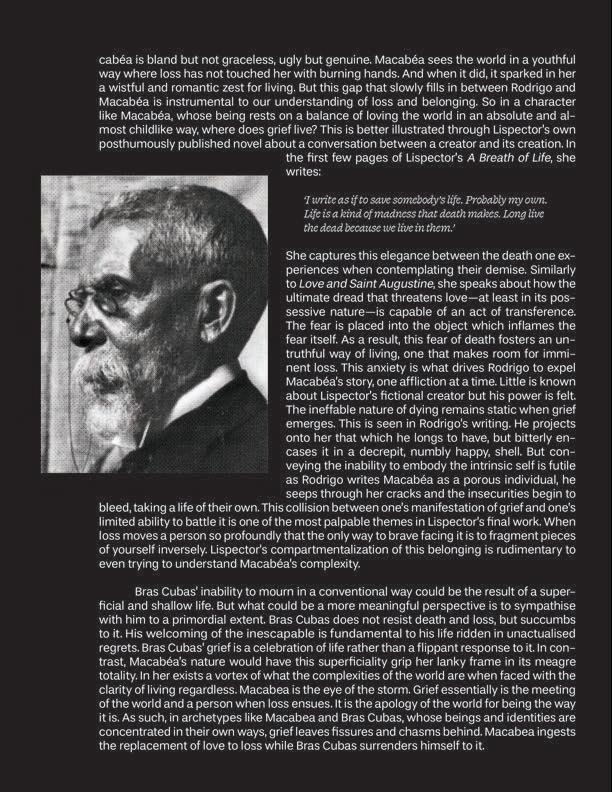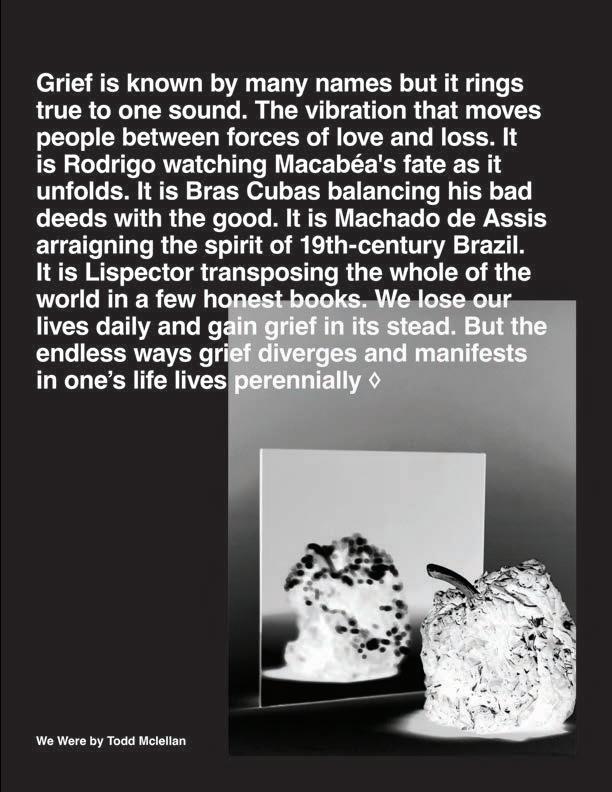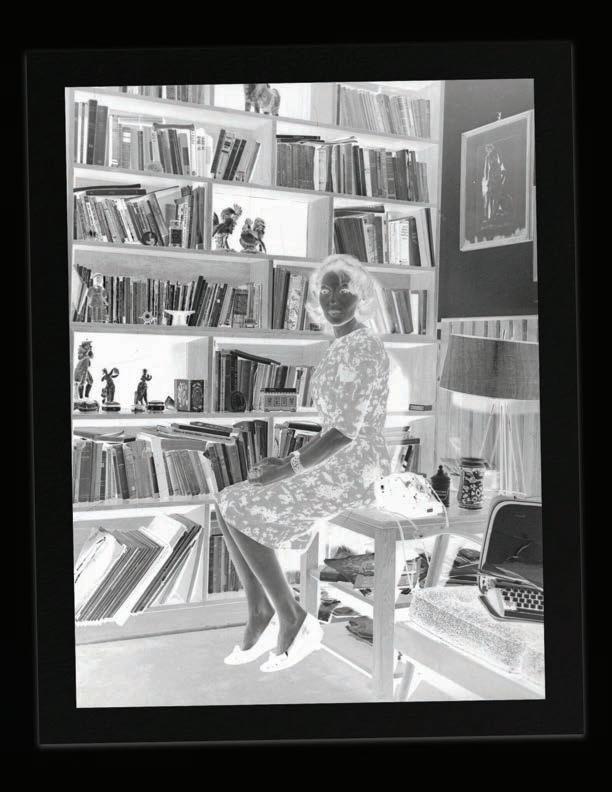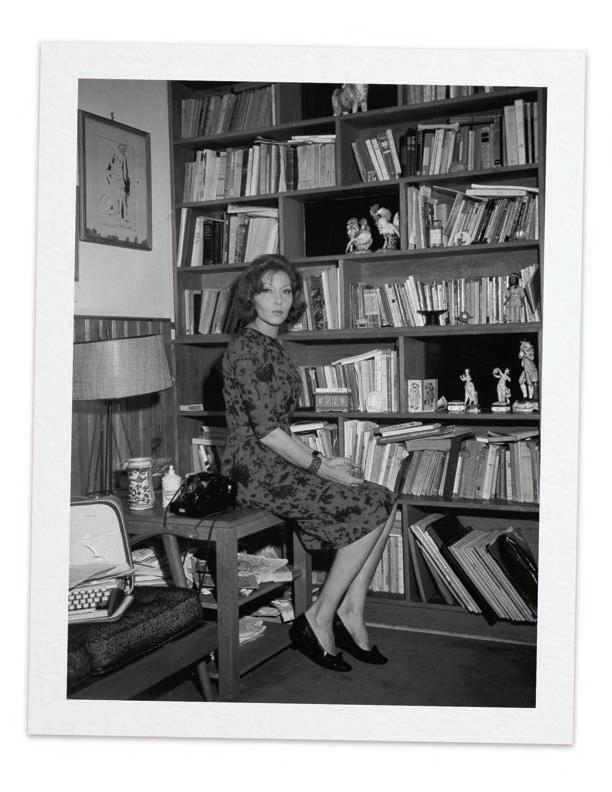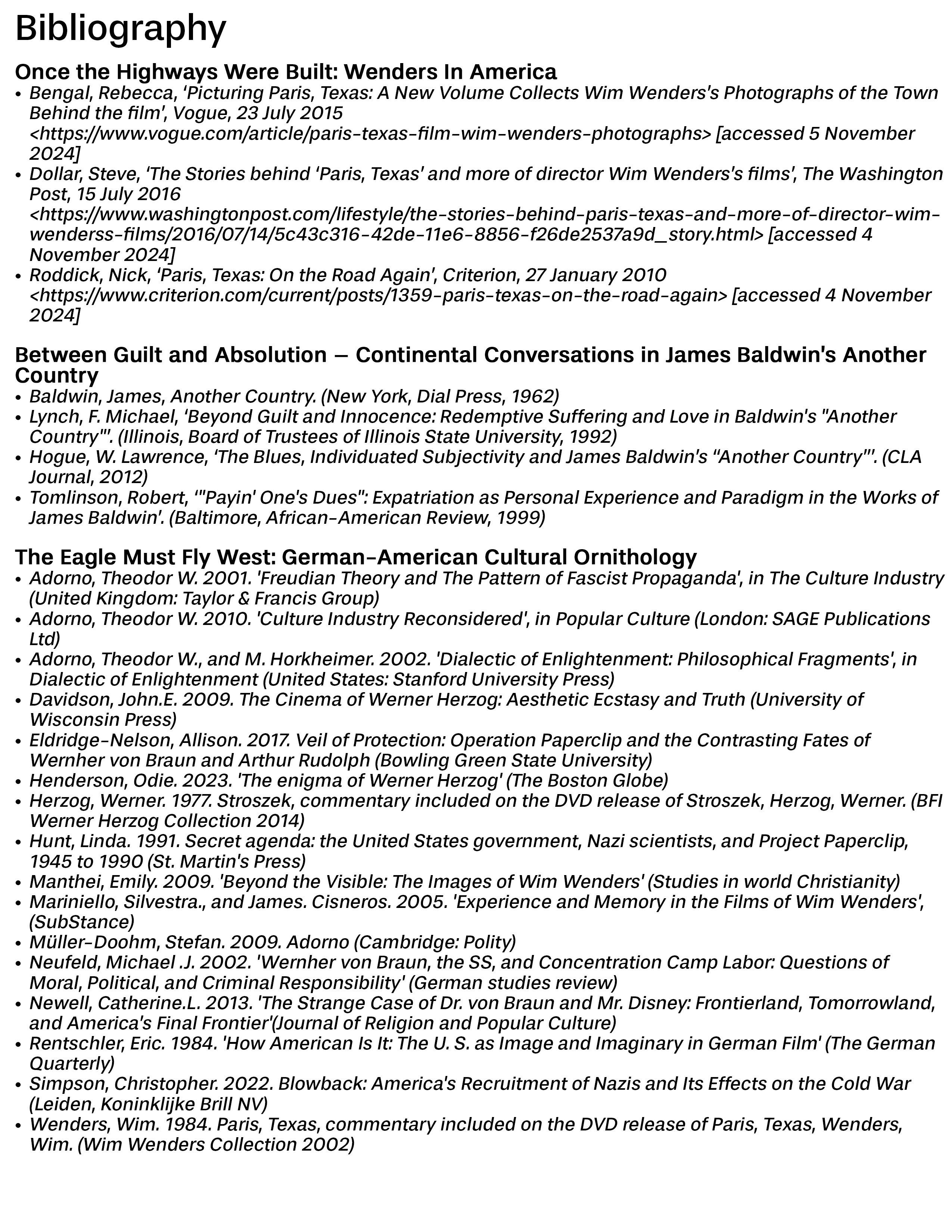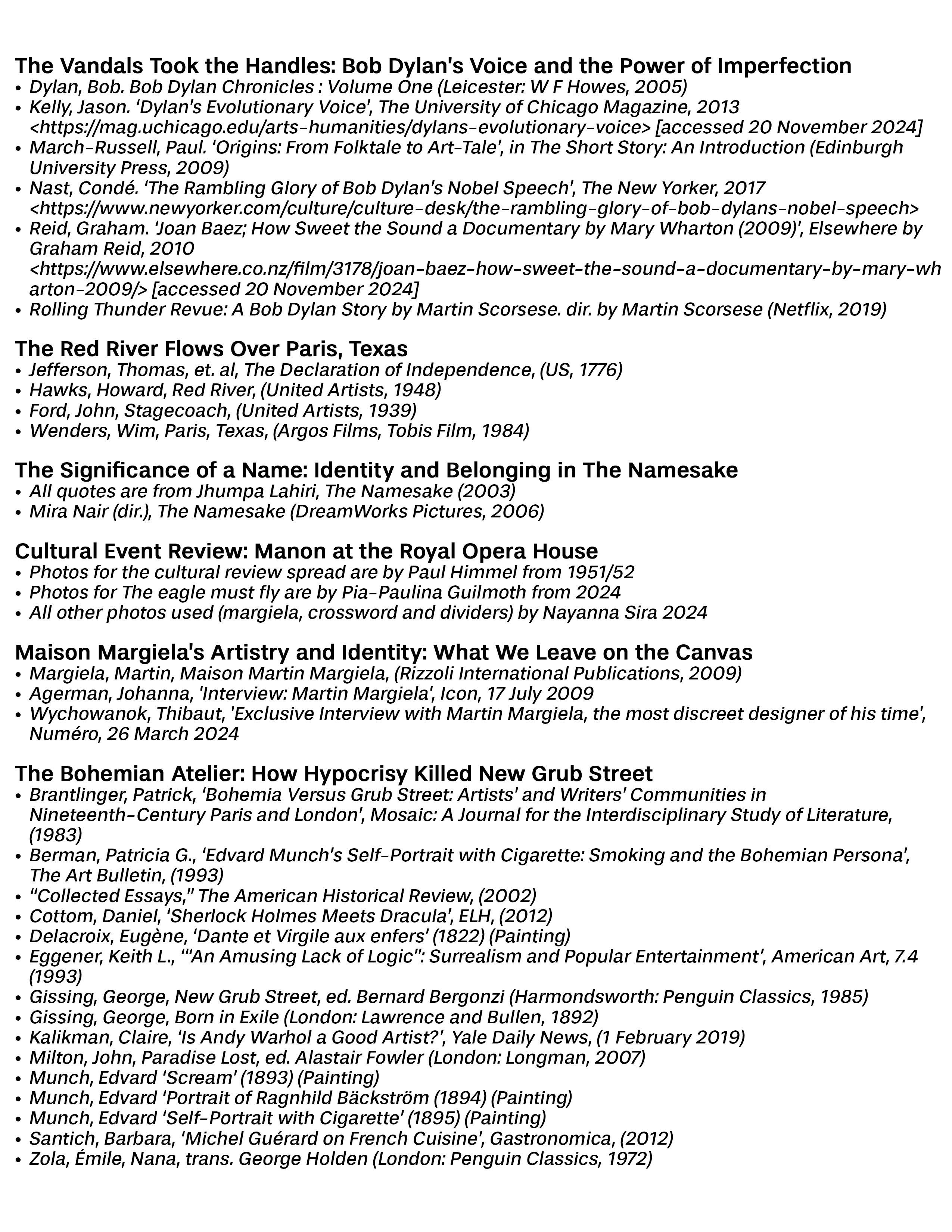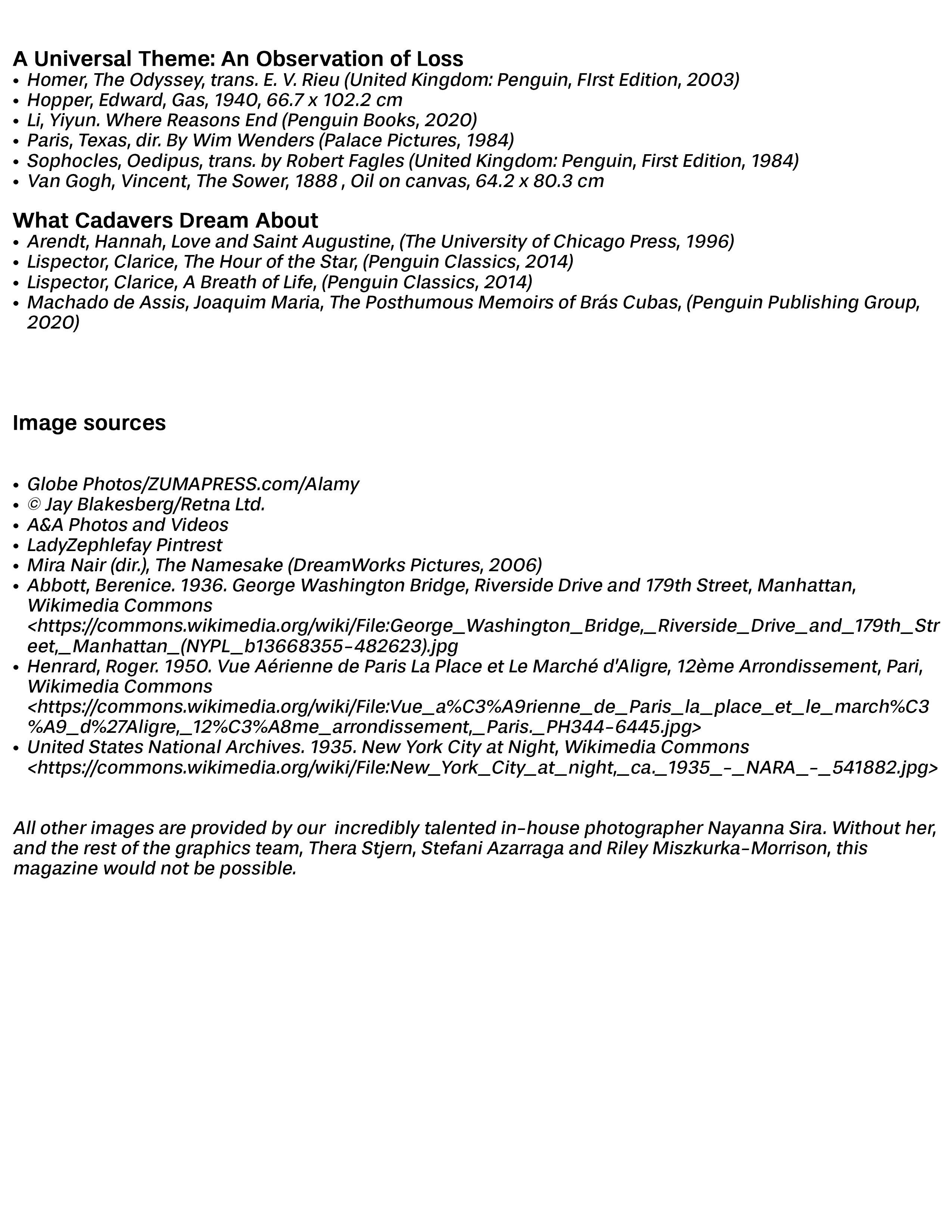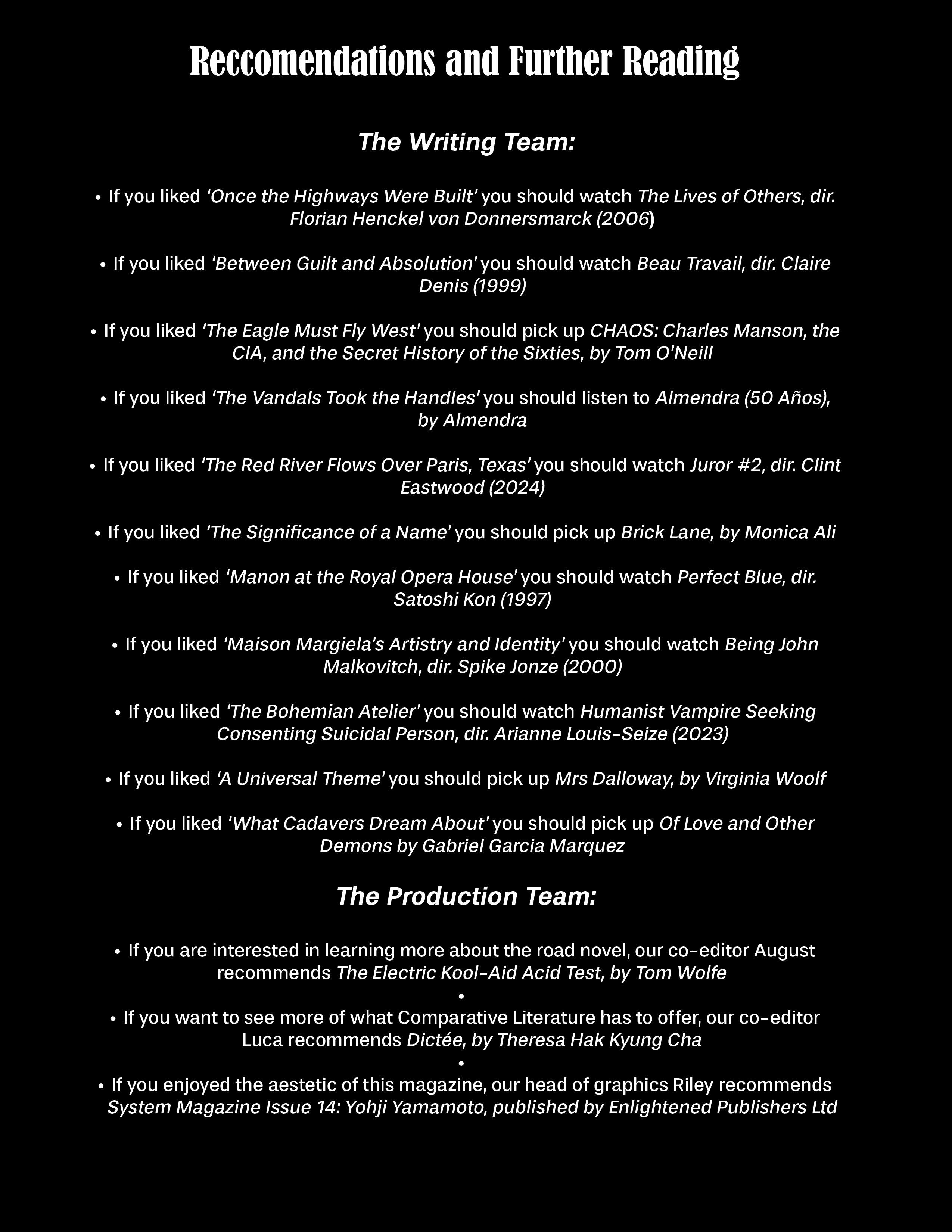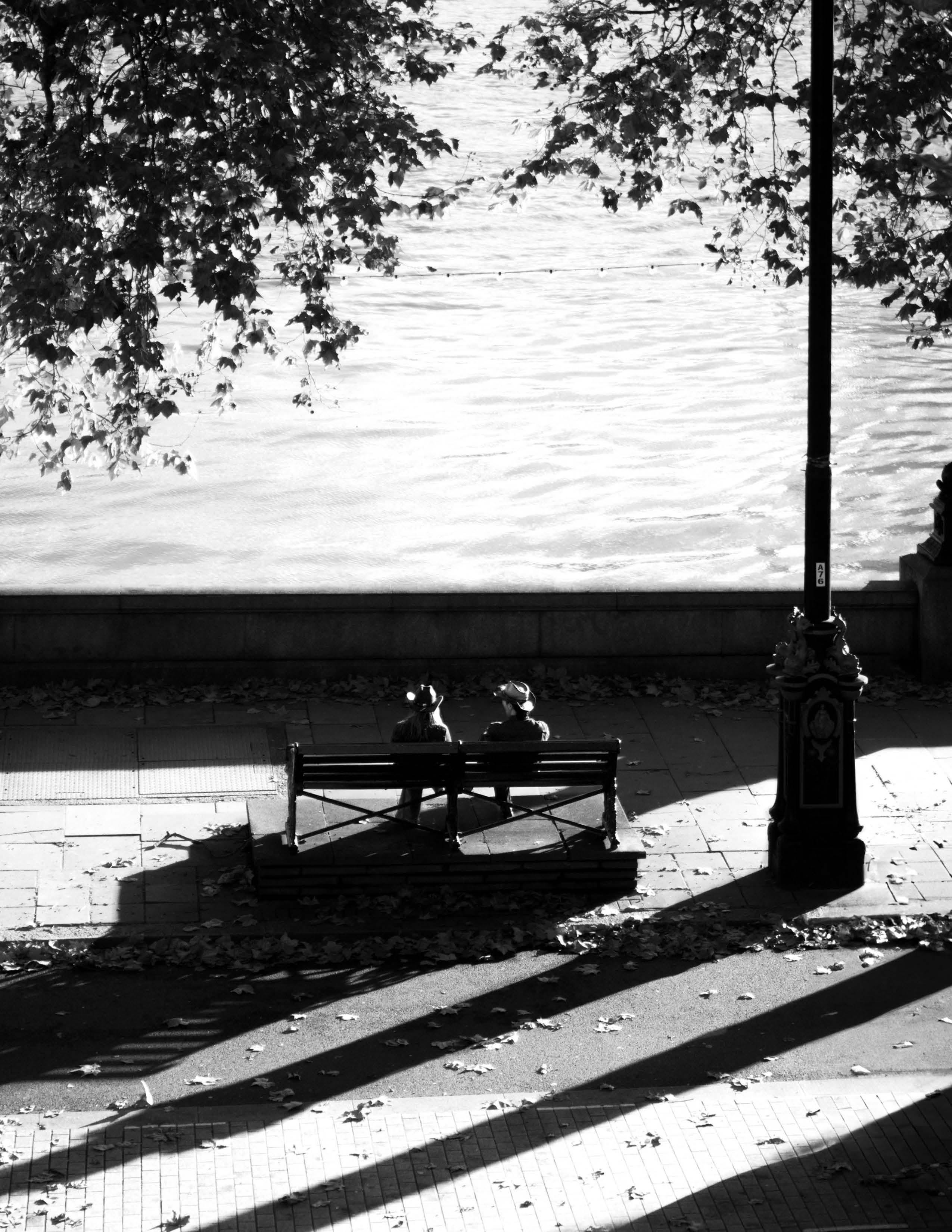





Trilogy,an unofficial trio of films groupedtogetherfortheirsimilarities inthemeswhichincludeaimlessness, loneliness,and identity.These films establishedWenders’cinematicstyle and garnered attention and praise from the internationalfilm industry. Paris, Texas (1984), his most well-knownfilm,wasareturntothe road moviegenreforboth Wenders and cinematographerRobby Müller, aswellasanexplorationofWenders’ interestintheUSA,whichisseenin otherworkssuchasAliceintheCities (1974).The film providesa touching story about loss and family,with Harry Dean Stanton’s brilliant portrayalofthe protagonist,Travis, and Müller’s cinematography beautifullycapturingthevastdeserts and towering citiesofAmerica.The keyfeaturewhichconnectstheRoad MovieTrilogyandParis,Texasarethe thematicparallelsbetweenthefilms which stem from Wenders’German background.
Paris,Texaswasaculminationof Wenders’ fascination with America.HevisitedtheStatesin the earlyeightiesand created a photoseriescalledWritteninthe West which helped him scout locations and determine the atmosphereofthefilm hewanted to create.Anotherkeyinfluence was the work of writer Sam Shephard and particularly Motel Chronicles(1983),acollection of short poems and fragmented stories set in small towns throughoutthe American West. These would serve as the foundation for the script, providing an emotionalbase for Wenders and Shephard,along with Paris,TexasscreenwriterL. M.KitCarson,toexplorethrough the film. Road novels also impactedthemovie,includingthe worksofJackKerouacandRobert M. Pirsig. These established principal themes of the road genrewhichWendersdelvedinto to frame the search forpurpose andourrelationshipswithothers.

with hisson,Hunter.Travis’time in LosAngeles showstheimportanceofhavinglovedonesaround you,butWenderspushesthestoryfurtherwhen TravisandHunterreturntoTexasinordertofind hiswife,Jane.Thisiswherethethemeoffamilyis strongest,asTravisandHunterbondontheirtrip and begin to grow close once again.However, Wenders subverts the ideas ofthe traditional family narrative and distances Travis and Jane, both physically and emotionally.Through their poignant conversations,it is clear that Travis cannotreturntohisfamily,andhegivesuphisown dreamsofahappylifewith them in ordertolet JanereunitewithHunterashegoesoffonhisown. WendersframesTravis’storythroughthesituation that many Germans faced during its division, providingabittersweetconclusionthatcreatesa specialemotionalresonance found in Wenders’ mosttouchingworks.Wendershasspokenabout how significantParis,Texasisinhisfilmography, and his background has influenced the main themes.Germanyhad been divided formostof Wenders’lifeand manyfamilieswereseparated becauseofit;thiswasespeciallyevidentinBerlin, where Wenders had been living since the seventies.
Wenders’portrayaloftheUSinthefilm wasmuch more positive than those of contemporary EuropeanfilmmakersandgoesbacktoWenders’ fascinationwiththecountry.Wendersisaglobal filmmaker;he hasmade filmsacrossthe world, andlikestoexamineotherculturesandcompare them withafocusonbelongingfrom anoutsider’s pointofview.Identity,andthestruggletofinda senseofpurpose,arekeythemesinParis,Texas. Wenders explores this through the eponymous town ofParis,Texas.Parisitselfisan important aspectofTravis’identity,and,believingittobethe placewherehewasconceived,hebuyslandthere thinkingthathewilldiscoverhimselfthereandbe abletolivehappilywithJaneandHunter.America particularlywasintriguingtoWendersforitsvast stretchesofopenlandwithouttheculturalborders ofEurope.Adiscerniblelinkcanalsobemadewith therestrictionofmovementbetweenEastand
WestGermany,andtheimpactithadon Wenders’ filmmaking philosophy.Wenders’portraitoftheUS reflectshislovefortheroad,andasaEuropeanhe certainlyviewedAmerica’sendlesshighwaysasthe perfectplace to lose yourselfin the search for somethingnew.
Paris,Texas quickly found success,unanimously winning the Palme d’OratCannesFilm Festivalin 1984,andhasgoneontoberegardedasoneofthe greatestfilmsofalltime.Wenderscontinuestomake successful narrative films, although he has transitioned primarily to documentaries,fitting his slow andhumanisticapproachtofilmmaking.Paris, Texas,muchlikeallofWenders’bestworks,explores itsthemesinabeautifulandmovingway.Inplacing thevieweronapersonaljourneyoffamily,loss,and belongingthatultimatelyendsintragedy,thefilm is suretohavealastingimpactonthosewhowatchit.


theremainsofbygonerelationshipsacrossEuropeandAmerica,andhow noveltyoflocationinfluencesthe emotionalresponsetotragedy.
RufusScott’ssufferinginthebook’sopeningsectionispredicatedonaguiltthatemotionallyunioniseshim withthoseheleavesbehind.Asasaxophonist,hiswordlesssolosarepermeatedwithdrawlsthatbeg‘do you love me?’,often posited to be his interpretation ofhis white partner,Leona’s,voice amidstthe deteriorationoftheirrelationship;alovethatwasinexorablygroundedinsocialrealitiesthatpervadedtheir animalpassions.
The rhythm of their love drums softlyatfirst,‘rockingandrising’as the sea carries a boat,‘barely suggestive ofthe violence ofthe deep’.The novelitselfopensata lullingpace,hintingsteadilyatthe darker undercurrent but rarely allowing itto dissipate the hazy atmosphere it has so carefully cultureduntilRufus’sdescenttears itopen.SexwithLeonaisanactof defiance to the ‘almighty white God’,colouredwithvengeancethat fillsRufuswith ‘mysteriousdread’ clearly stemming from a marked dissonancebetweennaturaldesire andsocietaltaboothatpropelhim to masochistic absolution; appearing to answer Leona’s begging refrain in the definitive,I won’t,becauseIcan.
Rufus’ actions speak of wilful abandonment, pooling from a maelstrom of inner-guilt. ‘You motherfuckingbastard’,hespeaks to himselfin his finalmoments, clingingtotheGeorgeWashington bridge. In the opening chapter, someninetypages,Rufusleadthe treacherouscycleofsufferingandself-hatethatAnotherCountry’sextendedcastwillfollow.Butwherehe seeksabsolutionindeath,hisfriendsseekabsolutioninlivingduetohissacrifice;afatefulplungethatbears fruitinthelivesofthoseclosesttohim.‘Ifyoudon’tforgiveyourself,you’llneverbeabletoforgiveanyone else’,CassechoesdidacticallylatertoVivaldo,thecharacterwhoarguablymostlivesthefalloutofhis closestfriend’sfatefulsuicide.
VivaldohashisheelsfirmlyrootedinthemuckofNew York,asifslicinghisfingersonjaggedglassshards, tryingtorebuildamidstthebloodyfoundationsofhislostcomradeshipwithRufus.
Vivaldodancesdangerouslyfrom threattointimacywithRufus,whorememberstheirlastnightinvivid detail,tryingtounderstandthefuryofRufus’actionsastodiscernwhether,inretrospect,heactedcorrectly byholdinghisfriendinbedafteraviolentoutburst.Baldwinlingerstitillatinglyontheheavyclosenessof
Heartbreakingly,Vivaldo admits‘Ican stand on the edge myself,butIcan’twatch anyone else do it’, acknowledginghisabandonmentofRufuswhichhenow seekstorepairwithIda,Rufus’sister,whoinstead becomesacanvasforhisprojectionsofself-hate.Knowinghisfriendsointimately,Vivaldomustparallelhis ownsexlife,typifiedthrough‘rendingandtearing’,withtheviolenthome-lifeofRufusandLeonathatdeeply traumatisedhim.ButwhenEric,Rufus’formerlover,returnsfrom Paris,thepairreignitetheiroldfriendship amidstthebackdropofVivaldo’scrumblingrelationshipwhichkindlesintensedomesticspatsthatgrapple openlywiththecomplexitiesofinterracialrelationships.Vivaldoishobbledbyhisemotions,awriterunable towrite,anddistanceshimselffrom Idabybeingwilfullyignoranttoherinfidelity.
Risking closeness with Eric uproots Vivaldofrom hisparalysis,dueinlargepart to how itprompts him to examine his closenesswithhismartyr.‘Wasitlikethis for Rufus?’,Vivaldo wonders,centering theirsexentirelyintherealisationhecould be becoming everything Scott’s death representstohim.Itisentirelytypicalto the sprawling,hotnarrative ofAnother Country,thatVivaldo’sacknowledgement ofhis faultis pivotalin his absolution, stating‘thismayneverhappenagain’,as thetransformativeeffectoftheencounter allows him to forgive himselfand move forwardwithIda.NotdespitesexwithEric, butbecauseofit.
Eric,whospendsanimpactfulchunkofthe novel’stimeinaParisianidyll,suffersthe least of Another Country’s characters because he isallowed space awayfrom the stifling metropole to explore true, innocentintimacywith hispartner,Yves; hereBaldwinperhapsrecollectinghisown experiencesin the French capital.When Yvesisviewedasaplaceholderforthecity ofParis,oneisprovidedmoreinsightinto Baldwin’s liberating continental experience ashe epitomisesrespite and contrastto the extentthatEricimagines hispartnerwoulddespiseAmerica.There isamarked separation between thetwo entities forEric,the pairso antithetical because the latteris poisoned with the residual past.Relocation for Eric was somethingofarebirth,introducedtothe storynakedandstillweareleftwiththe impressionthathisstoryisinitsgenesis, indicatingthatthereischanceforgreater growthinprocessingRufus’deaththrough acontinentallens.

RufusScotthasanintensegravityasacharacter,forcingmuchofhisfamilytoorbitthespaceheleavesbehind formostoftheirarcs.Eric,inhavingfosteredalovesoexclusiveandinnocentwhilerecoveringfrom his relationshipwithRufus,formsanarrativewhollyremovedfrom hismartyrdom.ByfleeingNew Yorkoriginally, Eric,likeVivaldo,hasleftsinunacknowledgedandbeginsanaffairwiththemarriedCass.Baldwinhesitatesto explorethedestructiveeffectthishasonCass’smarriage.Theaffairseemstorestentirelyonthecruxthat theirsexualunityallowsthem todevelopindividually,andeventuallybacktowardsmonogamy,imbuingEric’s narrativewithtruemoralambiguitythathehadremainedcleanofinParis.Indeed,althoughhisrelationship withVivaldoisfocalisedoutsideofEric’snarrative,thepairshareweightydeclarationsoflovedespiteseeming certaininthefinalityoftheiractions.
Eric’sloveaffairsarepresentedsofondlyandwithsuchemotionalheftthatheisn’tdirtiedbythem,insteadwe areinvitedtoview hishedonisticexplorationsascleansingsolidificationsofhistruelove.Yves’arrivalinNew York,viewedboyishlythroughhisperspectiveasa‘citywhichthepeoplefrom heavenhadmadetheirhome’, isslightlycontradictorytothenomadictoneofthestory’swanderinginfidelityandshame-drenchednarrative inthatheisentirely‘certain’ofEricwhenheseeshim joyouslywaving.ButtoBaldwin,reachingabsolutionis completelydetachedfrom introspectionandisinsteadaroadwalkedwithothers.Althoughdrivenlargelyby entangledmessysexinNew York,thearrivalofYvesisareturntotheuncomplicated,Europeanidyllthatwas atruerelieffrom Americanlifethatchartereddesireandresentmentbutnevertruesalvation.
AnotherCountry’sfinalpassageisalmosttoodetachedfrom thestory’sopeningtoseem plausible,thewarmly naiveoutlookrelatedasYveseuphoricallystumblesthroughcustomscannotpossiblybetheconclusiontoa narrative kickstarted with the murkythemesofdesolation and severance.Butabsolution dripssteadily throughthenovel’scharactersandstories,cleansingtheirguiltandformingtheNew YorkimaginedbyYves’s quintessentialforeignness.Actualisingthisalienconceptisaprocessdemandingofself-examination,andas VivaldoandEricgrapplewiththeirsinsthroughexperimentationswithsex,theyreassesstheirboundariesand comforts;theyareplaced inthegreatercontextofRufus’ssuicideastounderstandtheirguiltandtread carefullytowardsabsolution.






ThunderRevuetourexemplifiesthiscommitmentas
Oneofthemoststrikingperformancesfrom thistour zealousexpression,illustratinghiscontext-sensitive musicalform.Forinstance,therhythmicrecitationof son?’andtheisolationofcertainwordslike‘besidea singingstyleappearsintentionalratherthanamere rejectionofconvention,mirroringthesong’sthemes



Paris,Texasopenswitha sweepingaerialshotofthe desert,surveyingthegorgeous Americanlandscapesuntilthe cameraseeminglystumbles uponHarryDeanStanton’s TravisHendersonbychance.It’s aquintessentialimageofthe Westerngenre;thesolitaryhero aloneamongstthevast expansehecallshomeisthe genesisofsomeofthegenre’s greateststories.TheWestis builtuponthesemythological heroes,theoftenmorally ambiguous,determined, individualistic toafault-but, nonetheless, menwith mysteriousor troubled pasts.


















